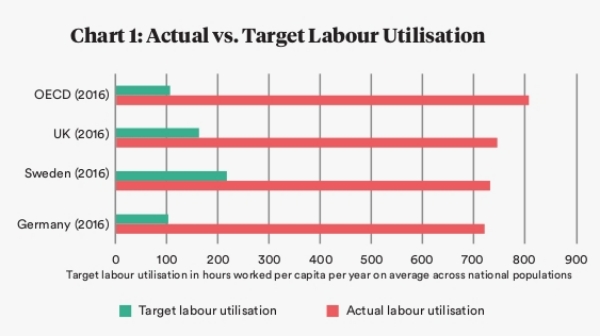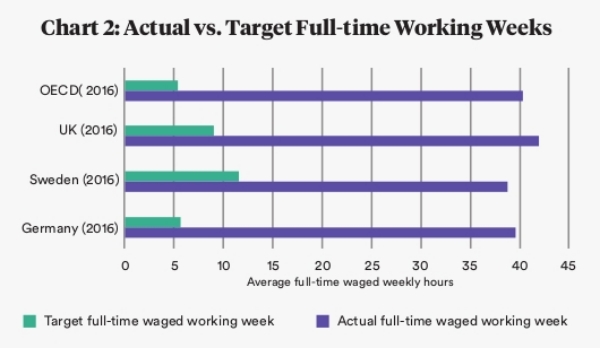The necessity to be lazy
for a good cause, of course. Seriously.
One year ago, Philip Frey of Autonomy Research published a short report about the [Ecological Limits of Work]ahttp://autonomy.work/wp-content/uploads/2019/05/The-Ecological-Limits-of-Work-final.pdf). I want to “celebrate” its first anniversary to thank Frey for asking one of the right questions:
“Rather than discussing how to maximize economic performance [let’s ask ourselves this:] provided current levels of carbon intensity of our economies and current levels of productivity, how much work can we AFFORD?"
The calculus, and its conclusions
Frey (see the full report for all details) takes data on carbon productivity per industry sector, that link emissions of GreenHouse Gases (GHG) to units of Gross Domestic Product (GDP), which in turn “map closely onto waged working time in one form or another”, and consequently suggest a “proportional relationship between labour time and GHG emissions”.
Frey then compares those data with the average amount of GDP produced per working hour, and with the amount of sustainable GHG emissions per capita, assuming that equivalent CO2 emissions of 1610 kg per year per capita would “allow the world to stay within the planetary boundary of 2°C warming compared to pre-industrial levels."

The result is that “actual working hours levels vastly exceed the levels that might be considered sustainable”. In the chart above, the green bars show how many hours of work a country could “extract” from each of its own workers, and the red bars are how many hours are actually extracted instead. In the case of UK, whose green bar is around 180 hours, and red bar at least 720, this means that the UK makes its workers work, on average, four times the hours they could work without making the Earth too warm.

When these obviously “high-level” are translated to ideal versus actual durations of a working week, we get this other chart, in which, for exampkle, Sweden has an official working week of about 38 hours, but to stay sustainable should cut it down to 12.
Conclusion, with some comments
First of all, the numbers above are about limiting total emissions. If the limit of weekly hours for a country of 1 million workers is 10 million hours, 10 millions it is, no matter how many people contribute to it. It means either everybody works 10 hours per week, or, for example, half the people working 20 hours per week, and the other half not working at all.
Second, Frey presents as only reason to ask this question the climate crisis but that, as concrete as it is, may be a distraction. Even if there were no crimate crisis, or even if no human activity could alter climate in any way, it would change little. Even without climate problems, or pandemics, as I argue here, there are plenty of reasons to ask “how much work we can afford”.
Finally, what Frey concludes is nothing else but the repetition of an idea that has already started circulating as a necessity of our times: the idea of rationing, just applied to human work hours, instead of raw matter.
(This post was drafted in April 2020, but only put online in August, because… my coronavirus reports, of course)
Who writes this, why, and how to help
I am Marco Fioretti, tech writer and aspiring polymath doing human-digital research and popularization.
I do it because YOUR civil rights and the quality of YOUR life depend every year more on how software is used AROUND you.
To this end, I have already shared more than a million words on this blog, without any paywall or user tracking, and am sharing the next million through a newsletter, also without any paywall.
The more direct support I get, the more I can continue to inform for free parents, teachers, decision makers, and everybody else who should know more stuff like this. You can support me with paid subscriptions to my newsletter, donations via PayPal (mfioretti@nexaima.net) or LiberaPay, or in any of the other ways listed here.THANKS for your support!